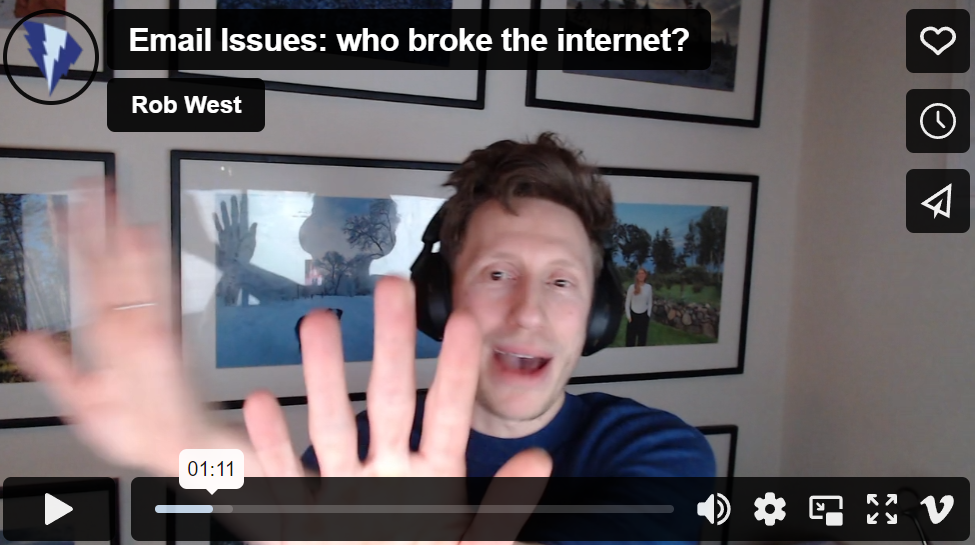One of our goals at Thunder Said Energy is to help make everyone smarter on the amazing world of energy, by sending out a daily email to our distribution list. But sending a daily email to 10,000 people turns out to be harder than you’d think. This video explains research email deliverability, SPF, DKIM, DMARC and lessons learned over 15-years.
We also endured an unfortunate issue in December that prevented 4,000 subscribers from receiving our research. We’re very sorry. We hope we’ve fixed it! And some comments follow below to make sure important research reaches you in the future.
This story goes back over fifteen years. In my first ever research job, we used to send research emails to a list of 2,000 investors… via Outlook. At the time, there was a limit that you could only BCC 800 people per email. And so we had to ‘blast out’ each research note in three separate batches, in a somewhat horrific process.
Hence today, large mailing lists tend to be managed by email marketing platforms. An amazing amount of computation goes on behind the scene, in an attempt to ensure emails reach you safely. This explains the common statistics that an email embeds 1Wh of electricity, emits 0.3 grams of CO2, and in aggregate the energy consumption of the internet runs to 800 TWH pa, or 2.5% of all global electricity.
An email list of 10,000 people becomes a somewhat unwieldy beast, and we worry that our research might not reach our clients, who genuinely want to receive it. We send out an email most days to our distribution list at 6:45am Eastern time. If you would like to receive this email, but are for some reason not receiving it, then please contact us, and we will help you resolve the issue.
The most common resolution for clients that are not receiving our emails is for your company’s IT administrator to whitelist our mailing list sending-domain, which is ml.thundersaidenergy.com. For GDPR reasons, the emails are sent from servers in Europe, which has also historically caused some of our US clients to screen out these emails. If your IT department needs any further details, then please do contact us.
We did have a major issue with our research email deliverability in December-2023. We had 3,500 users unsubscribe from our mailing list in a single day, all precisely one minute after our email was sent out. We understand that the cause was client-side mail servers checking all of the links in our outgoing emails (to make sure they are safe), including, unhelpfully, the one-click unsubscribe link that is now required by Google. Apparently we were not alone, and hundreds/thousands of other mailing lists have suffered from this issue. The issue is still under discussion in some angry Reddit threads!
Not all of our research reached all of our clients in December-2023 and early January-2024. What upset us about this, in particular, was that this timing happened to coincide with some of the most important and actionable research we have published over the past five years. In case you missed it, the three most important research notes are copied below.
